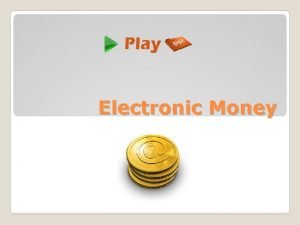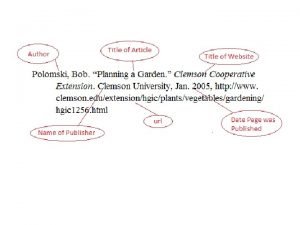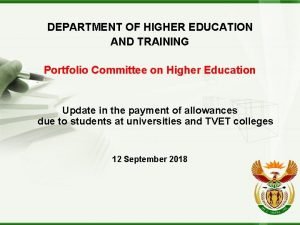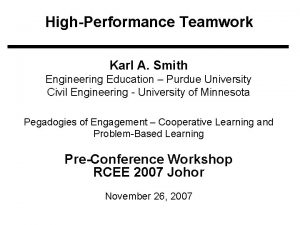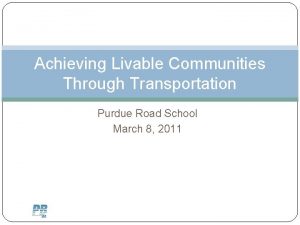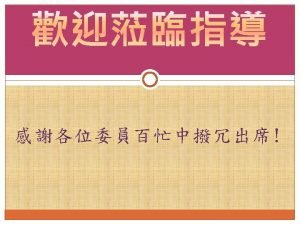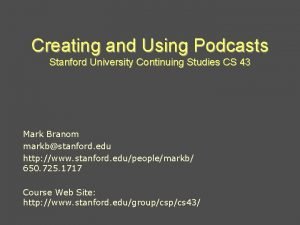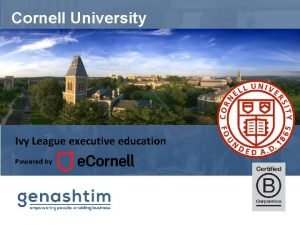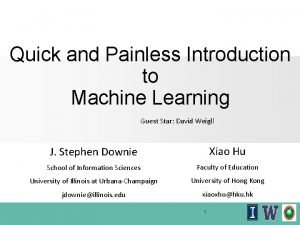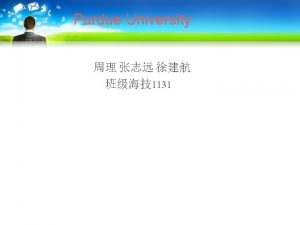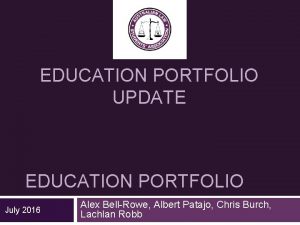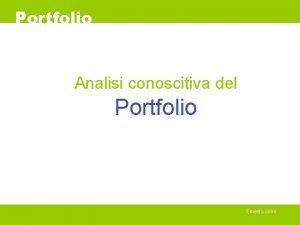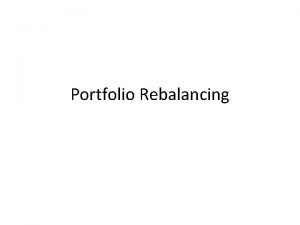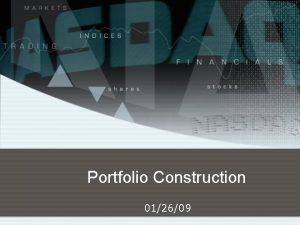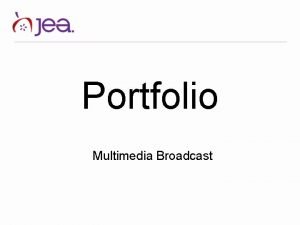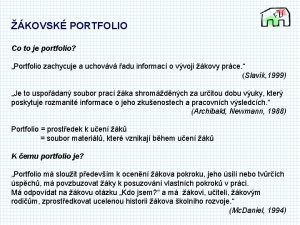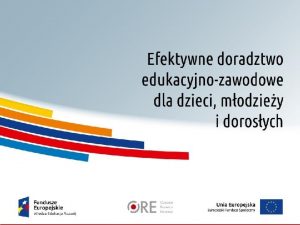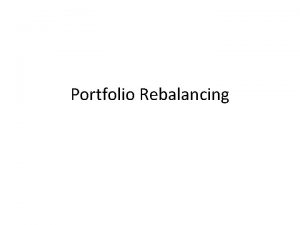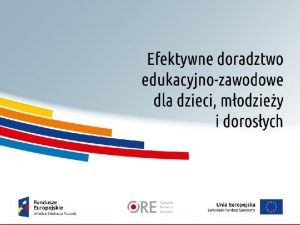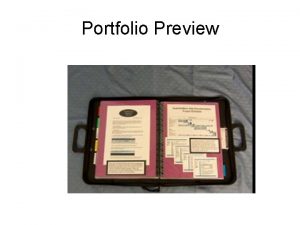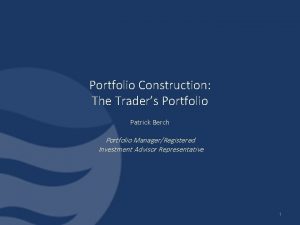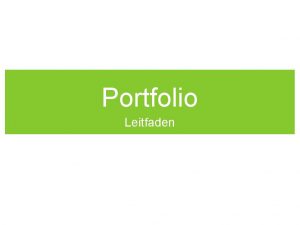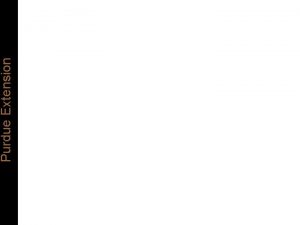Purdue Electronic Portfolio School of Education Purdue University

























- Slides: 25

Purdue Electronic Portfolio School of Education Purdue University and P 3 T 3: Purdue Program for Preparing Tomorrow’s Teachers to use Technology http: //p 3 t 3. soe. purdue. edu/portfolio. htm 2003 -04 1

Portfolios 2003 -04 2

Portfolios n Are purposeful collections of student work that illustrate efforts, progress, and achievement. n Focus on growth and development over time. n Provide a richer picture of student performance than can be gained through more traditional, objective measures. Barrett, H. (2001, August). Electronic portfolio development strategies. PT 3 Annual Meeting, Washington, D. C. 2003 -04 3

Purdue Portfolios n Purposeful, chronological collections of selected student work that exhibit to the student and others the student’s progress, achievement and effort over time. n Grounded in the written standards as developed by the Indiana Professional Standards Board. n Tools for self-reflection of students’ learning, documentation of their professional growth, and preparation for performance-based licensure. Report of the Portfolio Task Force. (2000, May). 2003 -04 4

Portfolio Processes n n Collection • Students gather materials to show knowledge, dispositions, and performance. Selection • Students identify those artifacts that they believe address standards. Reflection • Students think about their own evolving teaching practice. Projection • Students consider what steps they need to take to improve. Danielson & Abrutyn (1997) 2003 -04 5

Why Electronic? n Allows for artifacts in multiple media types (text, graphics, audio, video). n Supports hyperlinking to interconnect work and link to standards. n Portable, accessible, easily backed up, and avoids space demands of paper. n Creation helps students develop their own technology skills. 2003 -04 6

Purdue Electronic Portfolio 2003 -04 7

Purdue Electronic Portfolio n The Purdue Electronic Portfolio (PEP) system was developed as part of the P 3 T 3 project in part to help our students: • document knowledge and ability to teach, • reflect on their teaching growth and development, and • demonstrate proficiency with technology. 2003 -04 8

Additional Purposes Students can assemble examples of work for seeking employment and to prepare for subsequent state certification requirements. n Faculty can assess students’ work n • Artifacts are key assignments from courses. • Portfolios are approved at 4 gates in the teacher education program. n Faculty can aggregate data to assess the teacher education program. 2003 -04 9

PEP Organization Files Artifacts 2003 -04 Portfolio 10

Usage n PEP became required for students entering teacher education beginning Fall of 2002. n Blocks I and II, EDCI 270, EDFA 200, and other courses are now in the system. n Phased implementation will continue over the next two years. Blocks III and IV will come into the system in 2003 -04. However, gate C and D assessments must be in place this year. 2003 -04 11

DIAS 2003: Documenting Indicators of Academic Standards n Web-based documentation system of state and national standards n Designed for use in P-12 environments and teacher & advanced professional preparation programs n Used concurrently with PEP to demonstrate teacher candidate knowledge and application of P-16 standards n Required component of student teaching experience starting 2003 -2004 n Phased integration into block and methods courses starting Spring 2004 2003 -04 12

What Do Instructors Need to Know about the PEP System? 2003 -04 13

Instructors Should Know… n How accounts are created • Student accounts are created from Registrar’s data of enrollments in those courses using the system after the beginning of the semester. (Late additions may be omitted. ) Instructor accounts are created from data supplied by course coordinators. n Who to contact • eportfolio-support@purdue. edu 2003 -04 14

Instructors Should Know… n Course setup • Specific courses and portfolio assignments must be set up by the instructor or course coordinator each semester. Until a course is created, students cannot submit their work. n Projects • The first required portfolio project in a course should always be designated Project 1. 2003 -04 15

Instructors Should Know… n Standards to be addressed • What themes and INTASC principles will the portfolio assignment address? In multisection courses, this should be the same across all sections. n Earlier is better • Have students check access before due dates. • Avoid end-of-semester due dates. 2003 -04 16

Instructors Should Know… n Instructor Functions • You should be familiar with how to access and assess student work within the system. n Student Functions • Instructors automatically have access to the student side of the system. You should be familiar with how it works so that you can address student questions that may arise. 2003 -04 17

Instructors Should Know… n Where to go for help • eportfolio-support@purdue. edu • Christian Mattix, cmattix@purdue. edu • Education computer labs on the 3 rd floor of BRNG 2003 -04 18

What Do Students Need to Know about the PEP System? 2003 -04 19

Students Should Know… n Why? • What is the purpose of the portfolio (e. g. , assembling evidence of teaching, meeting SOE assessments, preparing for future licensure, job search evidence)? n What? • What standards should they be addressing and how should they think about and reflect on their own growth and development? 2003 -04 20

Students Should Know… n Browser • n High Stakes • n Internet Explorer is recommended Failure to satisfactorily complete a required portfolio assignment means course failure and inability to continue in teacher education. Help is available • • eportfolio-support@purdue. edu (for account or login problems) TAs in Education computer labs on the 3 rd floor of BRNG (hands-on help) 2003 -04 21

Demonstration 2003 -04 22

Demonstration n Let’s see a demonstration of some of the basic functionality of this system. Instructor Side Student Side n Please note: features are continuing to be created and refined. Expect future changes. 2003 -04 23

Questions? 2003 -04 24

For more information n Visit us on the web: • http: //p 3 t 3. soe. purdue. edu/portfolio. htm 2003 -04 25
 Purdue school of education
Purdue school of education An electronic is the electronic exchange of money or scrip
An electronic is the electronic exchange of money or scrip Electronic field production
Electronic field production Types of portfolio
Types of portfolio National research university of electronic technology
National research university of electronic technology English purdue owl
English purdue owl Purdue supply chain management
Purdue supply chain management Math building purdue
Math building purdue Purdue flow cytometry
Purdue flow cytometry Purdue university rotc
Purdue university rotc Alpha phi omega purdue
Alpha phi omega purdue Hosa health education portfolio examples
Hosa health education portfolio examples Portfolio committee on basic education
Portfolio committee on basic education Portfolio committee on basic education
Portfolio committee on basic education Portfolio committee on higher education
Portfolio committee on higher education Engineering education purdue
Engineering education purdue How to write an introduction to a portfolio
How to write an introduction to a portfolio Purdue summer start
Purdue summer start Purdue road school
Purdue road school 沈榮麟
沈榮麟 Stanford continuing studies certificate
Stanford continuing studies certificate York university concurrent education
York university concurrent education Cornell executive education
Cornell executive education Language hd
Language hd The education university of hong kong
The education university of hong kong Early childhood education
Early childhood education

